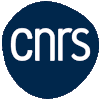Substrate softness-dependent vortex microdiscs induced cytotoxicity (December 16th, 2024)

This work focuses on the study of the intrinsic cytotoxicity of magnetic particles, developed in our laboratory for the application of local forces at the cellular level. More precisely, we were interested in the effect of the rigidity of the cellular growth substrate on the response induced by the presence of particles. The study […]
Read moreImpact of external magnetic field on Spin Transfer Torque magnetic memory operation (December 09th, 2024)

The extent to which an external magnetic field can influence the operation of Spin-Transfer-Torque Magnetic Random Access Memory (STT-MRAM) remains a critical question within the microelectronics industry in particular regarding its use in automotive industry. SPINTEC is actively engaged in an international technical group comprising academic and industrial experts in MRAM technology, with a particular […]
Read moreDevelopment and optimization of large-scale integration of 2D material in memristors (December 05th, 2024)

Two-dimensional (2D) materials like transition metal dichalcogenides (TMD) are considered as key candidates to replace silicon in several technologies with enhanced performances. In this work, we address the two remaining challenges to reach their industrial deployment: the wafer scale growth of TMDs and their integration into operational devices using CMOS compatible process. This is achieved […]
Read moreField-Free Spin–Orbit Torque Switching in Janus Chromium Dichalcogenides (December 04th, 2024)

By performing transport simulations on carefully derived Wannier tight-binding models, Janus chromium-based transition-metal dichalcogenide (TMD) monolayers are found to exhibit a spin-orbit torque (SOT) performance comparable to the most efficient two-dimensional materials, while additionally allowing for field-free perpendicular magnetization switching, due to their reduced in-plane symmetry. The spin–orbit torque (SOT) mechanism represents an innovative […]
Read moreThermal noise, binary phase states and how this can be used for data encryption (October 29th, 2024)

Unbiased random bitstreams are essential for encryption, secure communication, and unconventional computing, yet true randomness without bias remains challenging in hardware. By harnessing nanoscale thermal magnetization fluctuations in spintronic nano-oscillators, the AI and RF teams at SPINTEC and collaborators introduce a new approach to generating fully unbiased bitstreams. Thermal fluctuations provide an efficient and almost […]
Read moreA dipolar core-shell perpendicular shape anisotropy memory cell (July 08th, 2024)

We propose the concept of a core-shell composite structure coupled antiparallel via dipolar interaction, as the storage layer in perpendicular-shape-anisotropy magnetic random access memory (PSA MRAM). Benefits compared with a standard PSA MRAM include a reduced write time and the stray field. CoFeB core with a Co shell (height 8 nm; diameters 14 and 20 […]
Read moreSynthetic antiferromagnetic skyrmions moving at record speeds (June 24th, 2024)

Magnetic skyrmions are magnetic nanobubbles which are envisioned as bits of informations in our computers. A team from the Spintec laboratory in Grenoble has demonstrated that they can be moved by electric current at record speeds, up to 900 m/s, in antiferromagnetic stacks. These results hold promise for the use of skyrmions to store and […]
Read more
By using THz spintronic emission, we could study the spin-charge conversion mechanisms in 2D materials. High crystalline quality 2D materials are grown by molecular beam epitaxy on large area and CoFeB is deposited on top using soft UHV sputtering to obtain sharp interfaces. Such model system allows us to identify and quantify the spin-charge conversion […]
Read moreA new altermagnetic material with remarkable properties for spintronics (June 13th, 2024)

Scientists from an international consortium have demonstrated experimentally and theoretically the altermagnetic character of the material Mn5Si3, proving the incomparable advantage of this type of zero-magnetization magnetic phase: the strong spintronic effects associated with it are based on non-relativistic physics. Real space: Magnetic and crystalline structure of Mn5Si3. Reciprocal space: shifts in the electronic bands […]
Read moreMore topology in quantum electronic circuits (May 13th, 2024)

In the framework of the French-German laboratory association between SPINTEC and the IFW Dresden (CNRS International Research Project « SPINMAT »), and in collaboration with the C2N institute and the university of Würzburg, a novel plateform was implemented to reveal the non-hermitian topology of scalable quantum electronic circuits. It opens some new perspectives to realize […]
Read more



